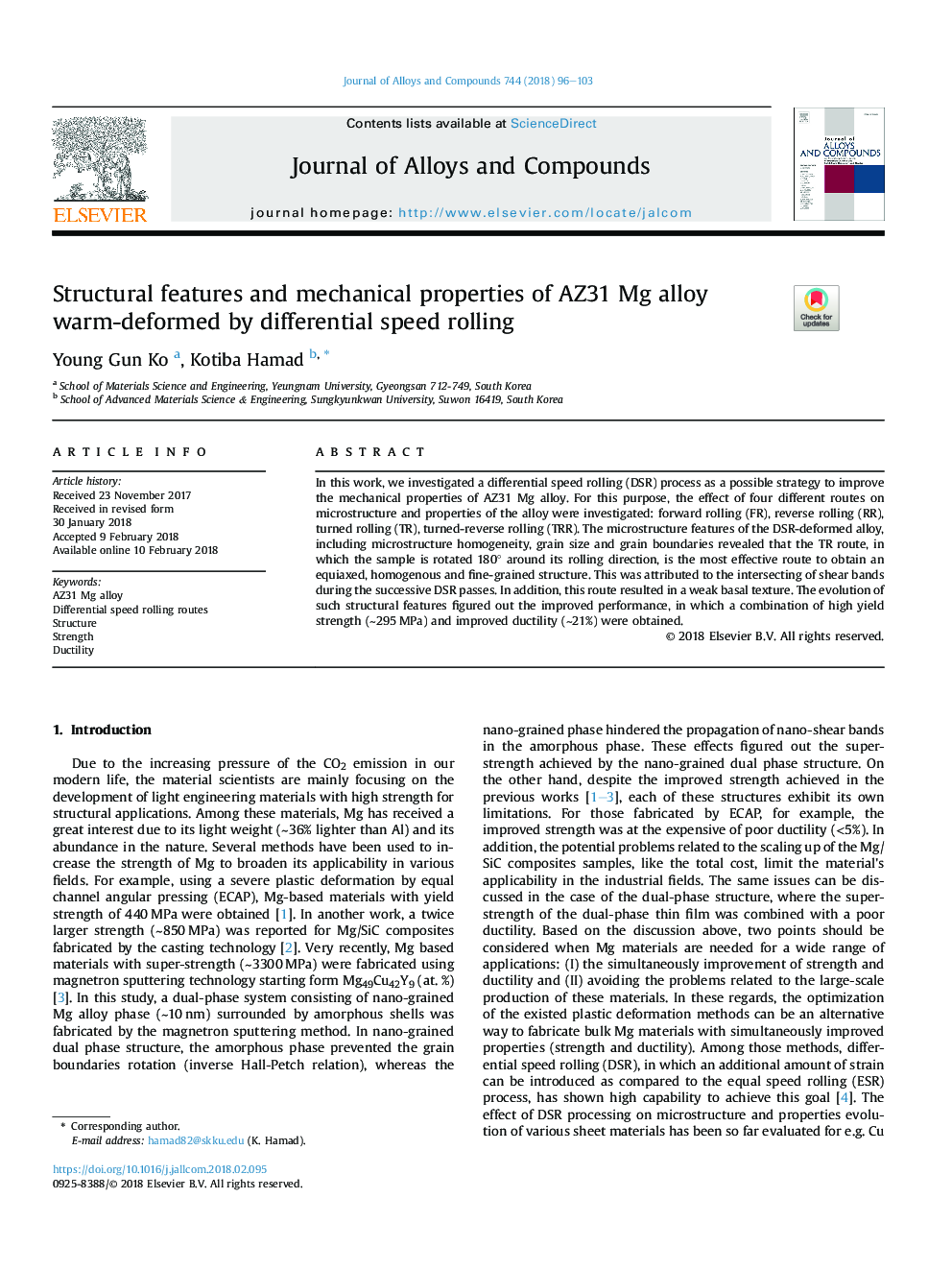| Article ID | Journal | Published Year | Pages | File Type |
|---|---|---|---|---|
| 7992854 | Journal of Alloys and Compounds | 2018 | 8 Pages |
Abstract
In this work, we investigated a differential speed rolling (DSR) process as a possible strategy to improve the mechanical properties of AZ31 Mg alloy. For this purpose, the effect of four different routes on microstructure and properties of the alloy were investigated: forward rolling (FR), reverse rolling (RR), turned rolling (TR), turned-reverse rolling (TRR). The microstructure features of the DSR-deformed alloy, including microstructure homogeneity, grain size and grain boundaries revealed that the TR route, in which the sample is rotated 180° around its rolling direction, is the most effective route to obtain an equiaxed, homogenous and fine-grained structure. This was attributed to the intersecting of shear bands during the successive DSR passes. In addition, this route resulted in a weak basal texture. The evolution of such structural features figured out the improved performance, in which a combination of high yield strength (â¼295â¯MPa) and improved ductility (â¼21%) were obtained.
Related Topics
Physical Sciences and Engineering
Materials Science
Metals and Alloys
Authors
Young Gun Ko, Kotiba Hamad,
